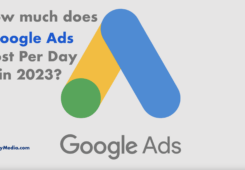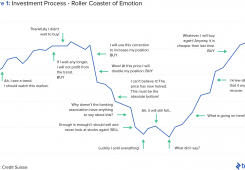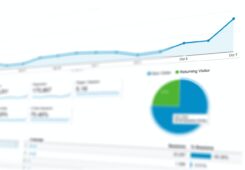If you’re running a business and trying to get the most out of your advertising budget, Google Ads will likely be your go-to platform. As one of the most popular and effective advertising platforms on the internet, Google Ads are a great way to get your business in front of the right audience.
The right bidding strategy is at the heart of a successful Google Ads campaign. However, with many options available, choosing the right one can take time and effort. In this article, we’ll explore the best bidding strategy for your business to get the most out of your Google Ads campaign.
What are Bidding Strategies?
Before we dive into the best bidding strategies, let’s take a moment to understand what they are. Bidding strategies refer to the way you set your bids in Google Ads. These strategies help you optimise your campaigns for the most important goals of your business. When it comes to bidding strategies, there are many options available to you. Some of the most popular include:
- Manual CPC
- Target CPA
- Target ROAS
- Enhanced CPC
- Maximise clicks
- Maximise conversions
- Target impression share
Each of these strategies has its benefits and drawbacks, so it’s essential to understand what they are and how they work before choosing one for your business.
The Best Bidding Strategy for Google Ads
Now that we’ve covered the basics of bidding strategies let’s take a closer look at the best one for Google Ads. While every business is unique and may have different goals, the Target CPA strategy is the best overall option for most businesses. Here’s why:
Target CPA
Target CPA (Cost Per Acquisition) is a bidding strategy that allows you to set a specific cost per conversion that you want to achieve. Google Ads will then adjust your bids in real-time to try and get as many conversions as possible while staying within your target CPA.
Why Target CPA is the Best Bidding Strategy
Target CPA is the best bidding strategy for most businesses for several reasons. First and foremost, it’s a great way to get the most out of your advertising budget. By setting a target CPA, you’re telling Google Ads exactly how much you will pay for each conversion. This means that you’re only paying for the clicks most likely to result in a conversion.
Another advantage of Target CPA is that it allows you to optimise your campaigns for specific conversion goals. This means you can choose which actions you want your audience to take and optimise your campaigns accordingly. For example, if you want more people to sign up for your newsletter, you can use Target CPA to optimise your campaigns for newsletter sign-ups.
Finally, Target CPA is an excellent option for businesses that are just starting out with Google Ads. Because it’s a relatively simple bidding strategy, it’s easy to set up and start. Plus, because it’s based on your specific business goals, it’s more likely to deliver results that are aligned with your overall marketing strategy.
Tips for Using Target CPA
Now that we’ve covered why Target CPA is the best bidding strategy for Google Ads let’s take a look at some tips for using it effectively:
Set Realistic Targets – When setting your target CPA, it’s important to be realistic. If your target is too low, you may need more conversions to make your campaign worthwhile. On the other hand, if you set your target too high, you may pay more than you need for each conversion. Take some time to review your historical data and set a target that is in line with your business goals.
Monitor Your Campaigns Closely – Once you’ve set up your Target CPA campaign, it’s important to monitor it closely to ensure it performs as expected. Keep an eye on your cost per conversion and your overall conversion rate. If you need to get the desired results, you may need to adjust your bids or ad copy to improve your performance.
Optimise for Mobile – More and more people are using their mobile devices to search for products and services, so it’s essential to ensure your campaigns are optimised for mobile. This means using mobile-friendly ad formats, such as responsive search ads, and providing that your landing pages are mobile-friendly.
Test Different Ad – Copy To get the most out of your Target CPA campaigns, it’s important to test different ad copy to see what works best. Try different headlines, descriptions, and calls to action to see what resonates with your audience. Remember only to test one variable at a time to measure each change’s impact accurately.
Consider Using Ad Extensions – Ad extensions are a great way to provide more information to your potential customers and improve your ad performance. Consider using sitelink extensions, callout extensions, and structured snippets to give your ads more visibility and improve your click-through rate.
Conclusion
Achieving a high return on investment (ROI) is at the core of any bidding strategy. One strategy that can help you achieve this goal is the Target CPA (Cost Per Acquisition) strategy. This bidding strategy allows you to set a target CPA, and Google will automatically adjust your bids to help you reach that target. This approach can help you optimise your bids for conversions and drive more sales.
However, it’s important to note that what works for one business may not work for another. Therefore, monitoring your campaigns closely is crucial, as testing different strategies and continuously refining your approach to achieve optimal results. Here are some other bidding strategies that you may consider: Target ROAS (Return on Ad Spend), Enhanced Cost Per Click (ECPC), Maximise Clicks, and Manual Bidding.
While choosing the right bidding strategy is essential, creating compelling ad copy that resonates with your target audience is equally important. Your ad copy should be persuasive and relevant to the searcher’s intent while incorporating relevant keywords. By doing so, you can increase the chances of your ad being clicked on, which can lead to more conversions and sales.
How to Choose the Right Bidding Strategy for Your Business?
Choosing the right bidding strategy is crucial when running successful advertising campaigns on platforms like Google Ads. Your choice of bidding strategy can significantly impact the performance of your campaigns and the return on investment (ROI) that you can expect to achieve. In this article, we’ll look at some key factors to consider when choosing the right bidding strategy for your business.
Understand Your Goals – The first step in choosing the right bidding strategy for your business is to understand your goals. For example, what do you want to achieve with your advertising campaigns? Are you looking to increase brand awareness, drive traffic to your website, or generate leads and sales? Each of these goals may require a different bidding strategy. For example, if your goal is to generate leads and sales, you may want to use a bidding strategy that is optimised for conversions.
Consider Your Budget – Another key factor to consider when choosing a bidding strategy is your budget. Different bidding strategies may require different investment levels, so choosing a strategy aligned with your budget is important. For example, if you have a limited budget, consider a bidding strategy that is designed to maximise your return on investment (ROI), such as Target CPA bidding.
Evaluate Your Competition – Your choice of bidding strategy may also be influenced by your competition. For example, if you’re in a highly competitive industry, you may need a more aggressive bidding strategy to stay competitive. On the other hand, if there is less competition in your industry, you may be able to achieve good results with a more conservative bidding strategy.
Consider Your Audience – The characteristics of your target audience can also influence your choice of bidding strategy. For example, if your target audience is primarily mobile users, use a mobile bid adjustment to increase your bids for mobile devices. Similarly, if your target audience is primarily located in a specific geographic region, use a location bid adjustment to increase your bids for that region.
Test and Refine Your Strategy – Once you’ve chosen a bidding strategy, it’s important to test and refine your approach continually. Monitor the performance of your campaigns closely, and make adjustments as needed to optimise your results. This may involve adjusting your bids, targeting specific audiences, or testing different ad formats and messaging.
While the Target CPA strategy is our top recommendation, it’s important to evaluate your business goals, budget, and target audience before making a decision. When it comes to Google Ads campaigns, choosing the right bidding strategy is crucial. By monitoring your campaigns closely, testing different strategies, and continuously refining your approach, you can achieve optimal results and drive more conversions.
If you need help with your Google Ads campaigns, PMAX Campaign or want a free audit, please reach out to our Google Ads Specialist Team to discuss your marketing strategies and budgets in more detail.



































